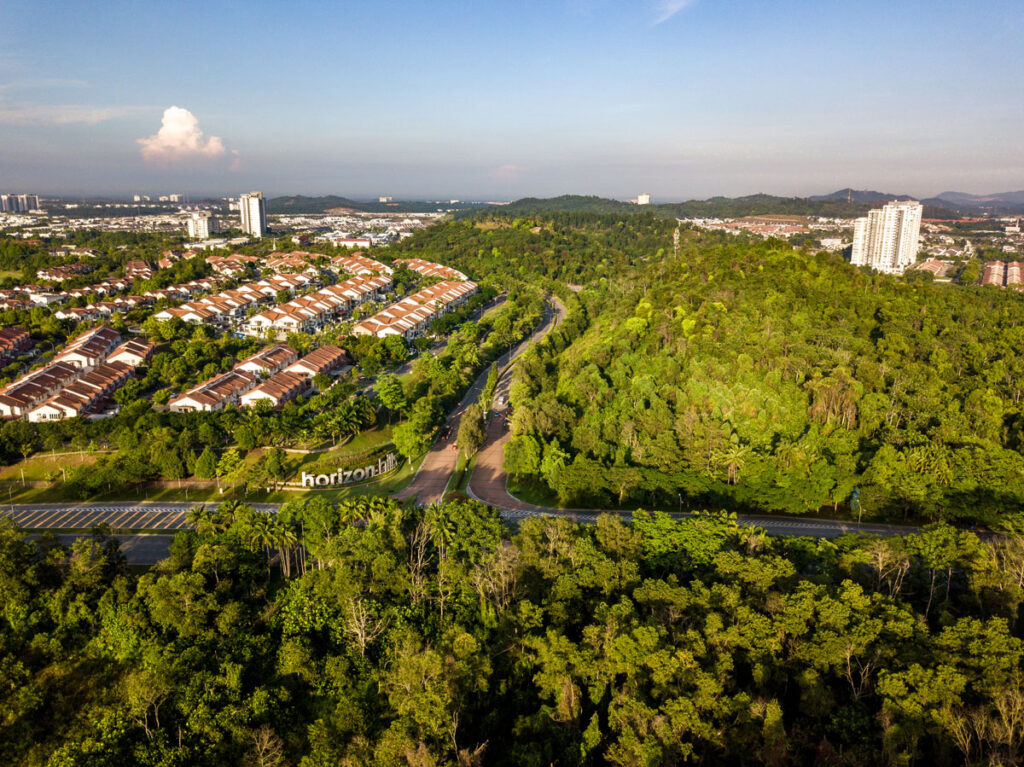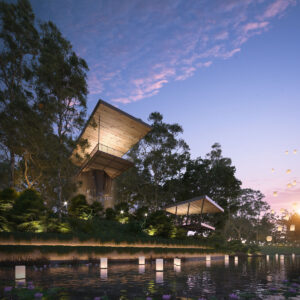Rehabilitating the environment

As climate change transforms global ecosystems, it affects everything from the places we live, to the air we breathe. To combat climate change on this scale, concerted efforts by the government, businesses, households and individuals are crucial. With this in mind, Gamuda Land has launched its #OneMillionTrees initiative to preserve and promote the country’s biodiversity, by aiming to plant one million trees across its townships by 2023.
Committed to working harmoniously with the environment, Gamuda Parks was introduced to create spaces where people and nature can harmoniously co-exist. Through Gamuda Parks’ Biodiversity Policy, sustainability initiatives are implemented in all Gamuda Land developments.
“For instance, we transformed an abandoned monoculture rubber plantation into a biodiverse parkland in Gamuda Gardens. To achieve this, Gamuda Parks adopted the Miyawaki forest restoration method, pioneered by a Japanese botanist with the goal of creating an ecosystem of fast-growing native forests in urban areas. We also carefully select native plant species to attract richer biodiversity, in order to leave the land in better shape than when we received it,” said Gamuda Parks chief operating officer Khariza Abd Khalid.
With three core focus areas comprising green innovation, sustainable development, and sustainable community, Gamuda Parks adheres to Gamuda Land’s development principle, “Listening to what the land has to tell us,” by promoting biodiversity throughout its design and build processes.

Adopting the Miyawaki method
To date, Gamuda Parks has planted over 330,000 trees throughout Gamuda Land’s developments, of which 50% are native species, with a target of 70% by end-2021. These include 26 flora species categorised as vulnerable, endangered or critically endangered in the International Union for Conservation of Nature (IUCN) Red List of Threatened Species, which benchmarks the conservation status of species worldwide.
The Miyawaki method aims to create dense urban forests from degraded soils within a short span of time of about 20-30 years, aligned with targets in Goal 3 of the National Policy on Biological Diversity 2016 – 2025.
“By planting seedlings close to each other, the method creates a competitive environment for sunlight and nutrients, thus encouraging plants to grow 10 times faster within a smaller area. It requires maintenance only in the first three years, after which the method allows nature to take its course – less hardy specimens give way to more dominant trees, creating a multi-layered vegetation structure that replicates those found in natural forests. The different species of plants and multiple layers of canopy provide food and shelter to a diversity of urban wildlife, particularly insects and birds,” said ecologist and ERE consulting head of Biodiversity Conservation & Ecosystem Management Dr Christine Dawn Fletcher.
“The Miyawaki method supports the developer’s #OneMillionTrees target throughout Gamuda Land townships, namely Gamuda Gardens, Gamuda Cove, Horizon Hills, and twentyfive.7, to build vibrant ecosystems and enrich biodiversity through mini-forest concepts in central parks,” said Suresh M. Perumal, Gamuda Land arborist. This initiative is aligned with United Nations Sustainable Development Goal (UNSDG) 15 to protect, restore and promote sustainable use of terrestrial ecosystems, sustainably manage forests and halt biodiversity loss.
With close to 8,000 trees planted across 20 hectares at Gamuda Gardens’ Central Park, for example, the retention of overstorey tree clusters helps to provide a habitat for birds, as well as natural shade for a 5.5km walkway for Central Park visitors. After three years of planting, the density of trees in the Central Park is comparable to that of the average tropical Malaysian forest. “The high density of young growing trees allows for more carbon absorption than conventional forest plantations, to further help combat climate change,” added Fletcher.
By mindfully crafting Gamuda Gardens and other townships with connected greenscapes and greenery patterned after natural forests, Gamuda Land further promotes biodiversity while combating climate change and delivering a lush environment for residents and visitors, encouraging indoor-outdoor connections.

We carefully select native plant species to attract richer biodiversity, in order to leave the land in better shape than when we received it.”
– Khariza
Digitalised park management approach
By utilising technology, information on each tree in an ecosystem can be stored on a cloud database by arborists as well. “This smart approach, which allows for timely updates, is done to effectively monitor the health of trees as well as calculate their carbon sequestration rates. With the information readily accessible through a QR code leading to Gamuda Parks’ webpage, the public is given a comprehensive overview of the arboreal ecosystem and its benefits,” Suresh explained.
Aside from benchmarking environmental benefits, this smart park management approach also has benefits from a social perspective by increasing local collaboration among stakeholders, educating the public and instilling awareness. Other advantages of the database for developers include the minimising of safety risks.
Nature School as an eco-education platform
Aligned with its mission to bring environmental awareness to a wider range of stakeholders through initiatives such as its GParks Rangers programme, Gamuda Parks has also introduced a Nature School under its Xploria placemaking initiative in Gamuda Gardens for young minds to explore the environment through a series of outdoor learning programmes.
Encompassing modules on subjects such as the rainforest, soil science and aquatic ecology, this eco-educational platform engages a wider range of public stakeholders on the importance of Malaysia’s natural heritage. By working with subject matter experts, these partnerships further strengthen existing biodiversity reclamation strategies.
With a dedicated guide for nature walk activities, children and adults alike will be able to explore the Gardens Hill forest trail in Gamuda Gardens to learn more about flora and fauna This approach is also seen in other Gamuda Parks initiatives, such as its upcoming Wetlands Arboretum at Gamuda Cove.

